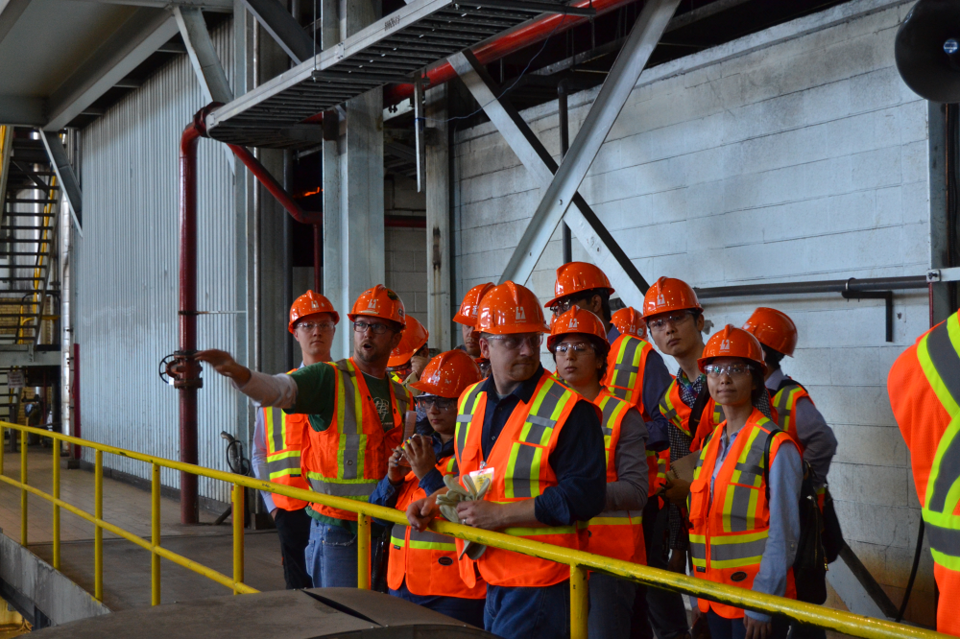SaskPower’s Boundary dam power station and carbon capture and storage (CCS) technology received some more international attention earlier this week. Students from 17 countries, including China, Ghana, India, Indonesia, among many others, visited Boundary Dam, and the Shand Power Station. The tour focused heavily on the carbon capture island at Boundary Dam’s Unit 3, and the carbon capture test facility at Shand.
“What we want to do is show these eager global students what the world’s first-class carbon capture and storage in a test facility looks like,” said Mike Monea, SaskPower’s president for carbon capture and storage initiatives. “We’re flattered to see that they are so excited to see this plant in operation, and talk to the people who built it and are running it. It’s good to see the enthusiasm of these young people, who will end up designing and building these plants in the future.”
The students who toured the facilities were participants in a summer school program that was part of the International Energy Agency Greenhouse Gas (IEAGHG) R&D Programme. Their tour was one of many activities meant to cultivate an interest in carbon capture technology and bring new minds into the industry.
Students were eager to ask an assortment of questions — particularly about the CCS technology on display. While on tour, many students expressed excitement at finally seeing the technology they’d been studying physically working.
“Boundary Dam is actually the reason I came for this summer school, because I actually wanted to see the facility,” said Tolu Kolawole, a student from Newcastle University in the U.K. “It’s pretty exciting for me, because I work directly on carbon capture, which is basically part of my PhD. We’re looking at how we can capture carbon more efficiently, and bring down the cost of capturing CO2.”
Monea said he was pleased to see the good educational representation present for the tour, saying, “We’ve got masters students, PhD students, and post doctorate students that have learned CCS is a viable option to reduce greenhouse gases.”
Monea emphasized how such tours bring home the impact the Boundary Dam CCS project has on the rest of the world, spreading the understanding that, “You can actually clean up emissions from a hydrocarbon fuel like coal.”
He added, “Some people in Saskatchewan think (CCS) is not a big deal, but this has shown us it is a big deal. It’s recognized around the world, and we keep getting countries visiting us with more and more people, so we feel very proud that we can show the good work we’ve done here in Saskatchewan.”




